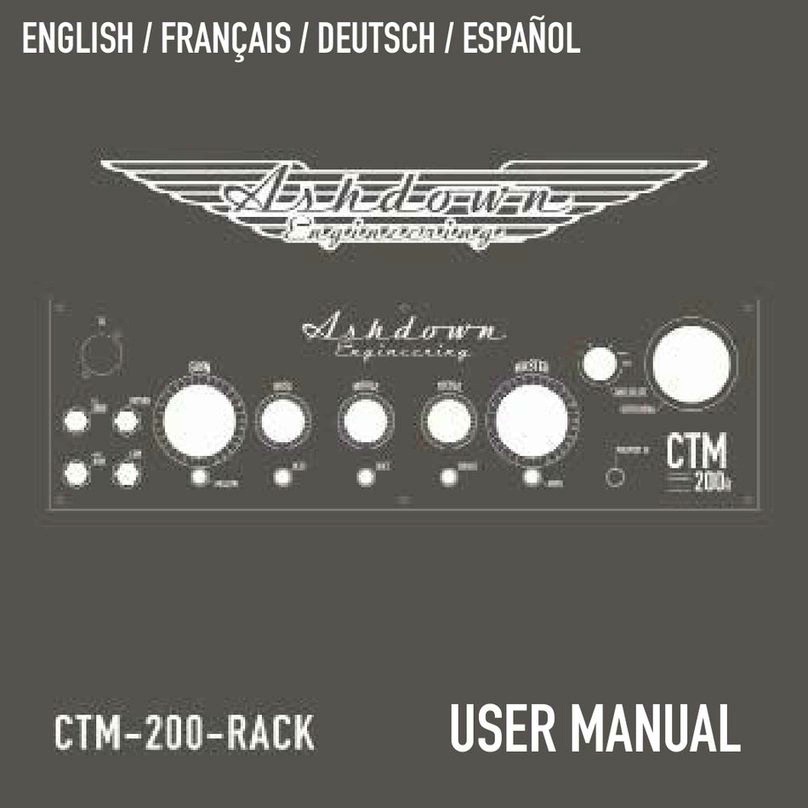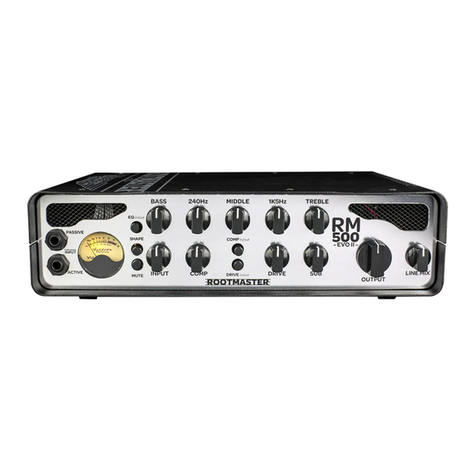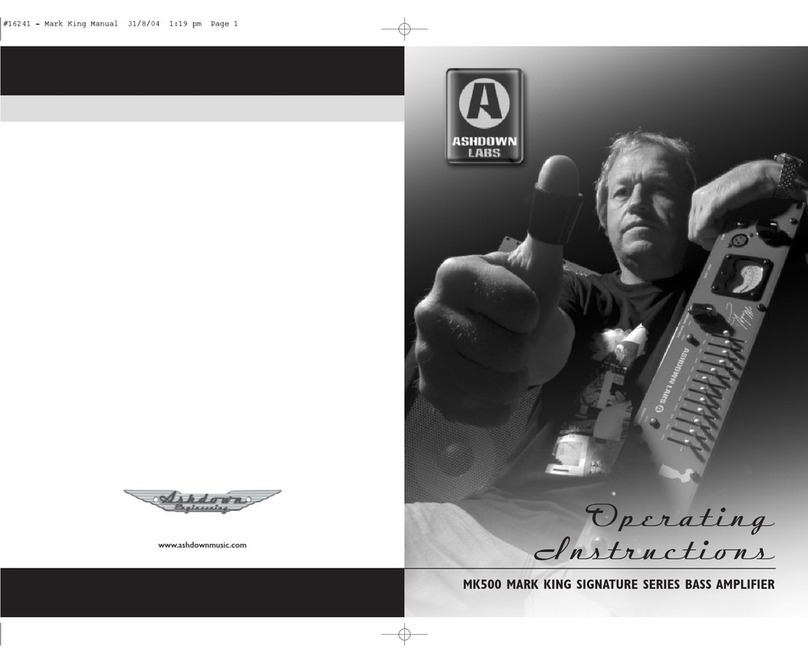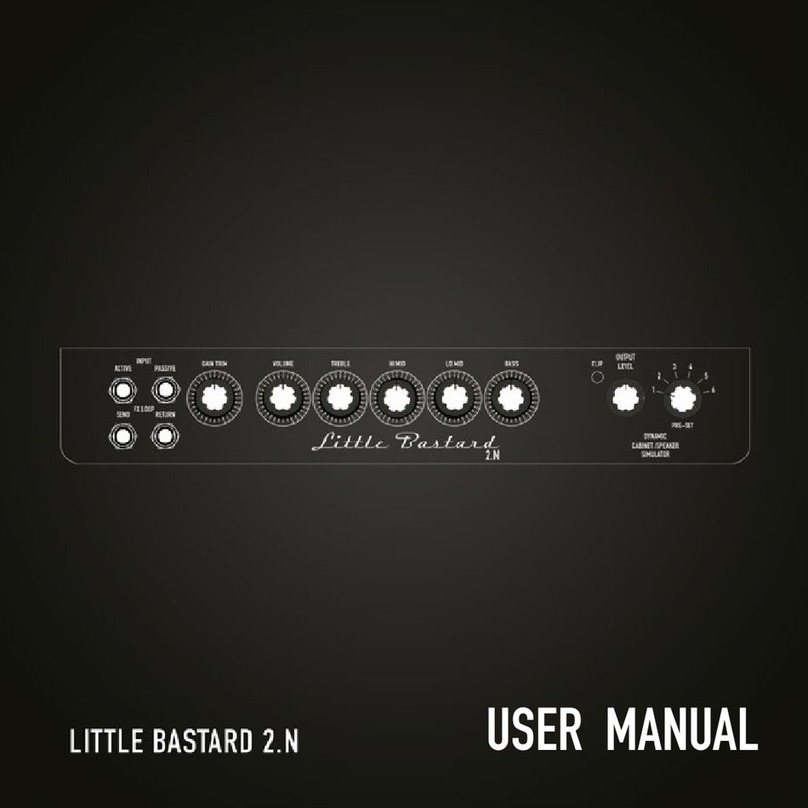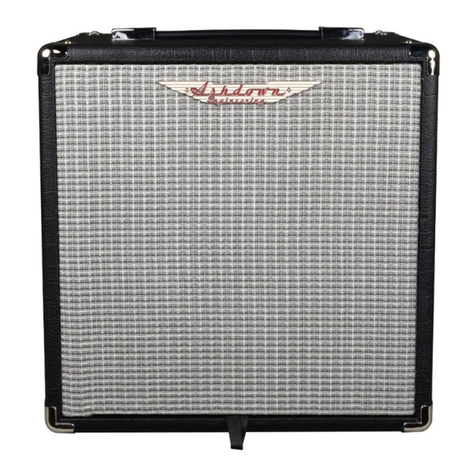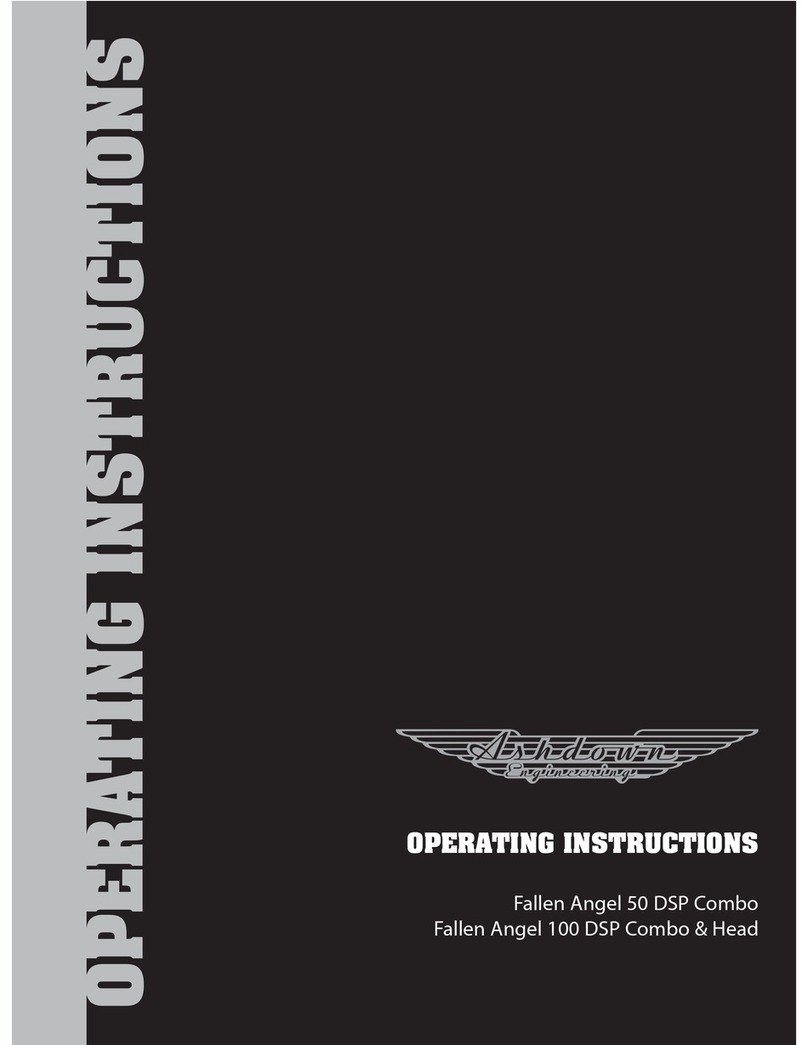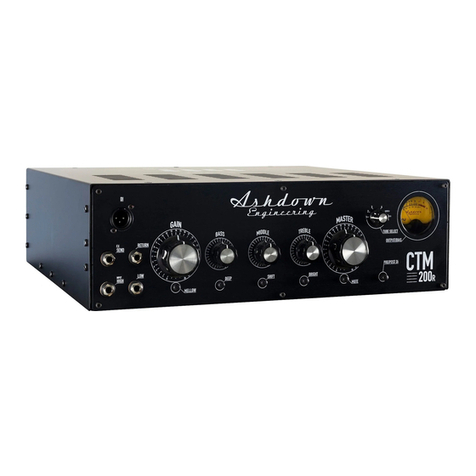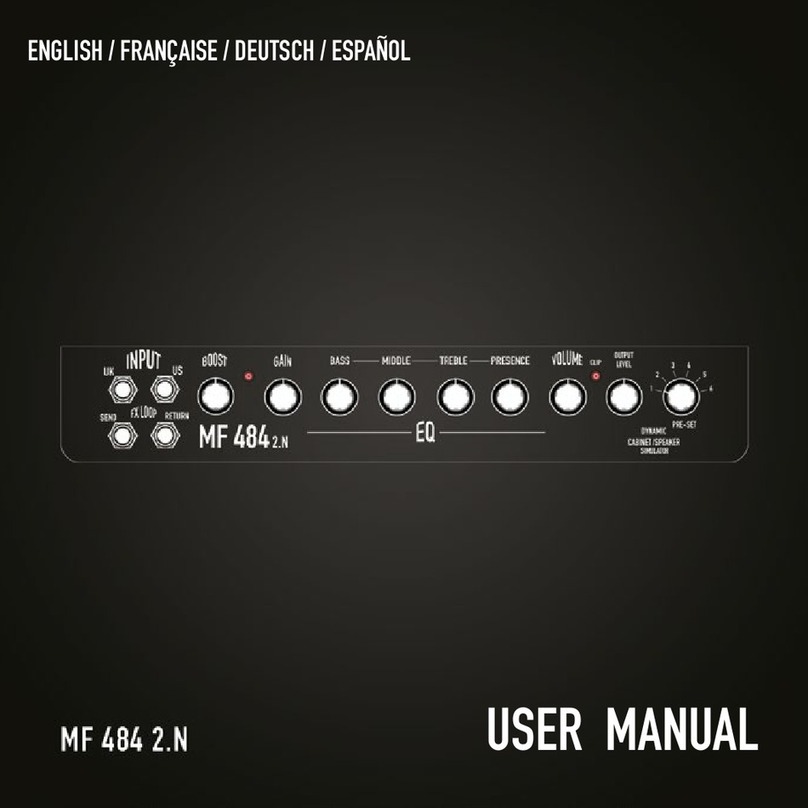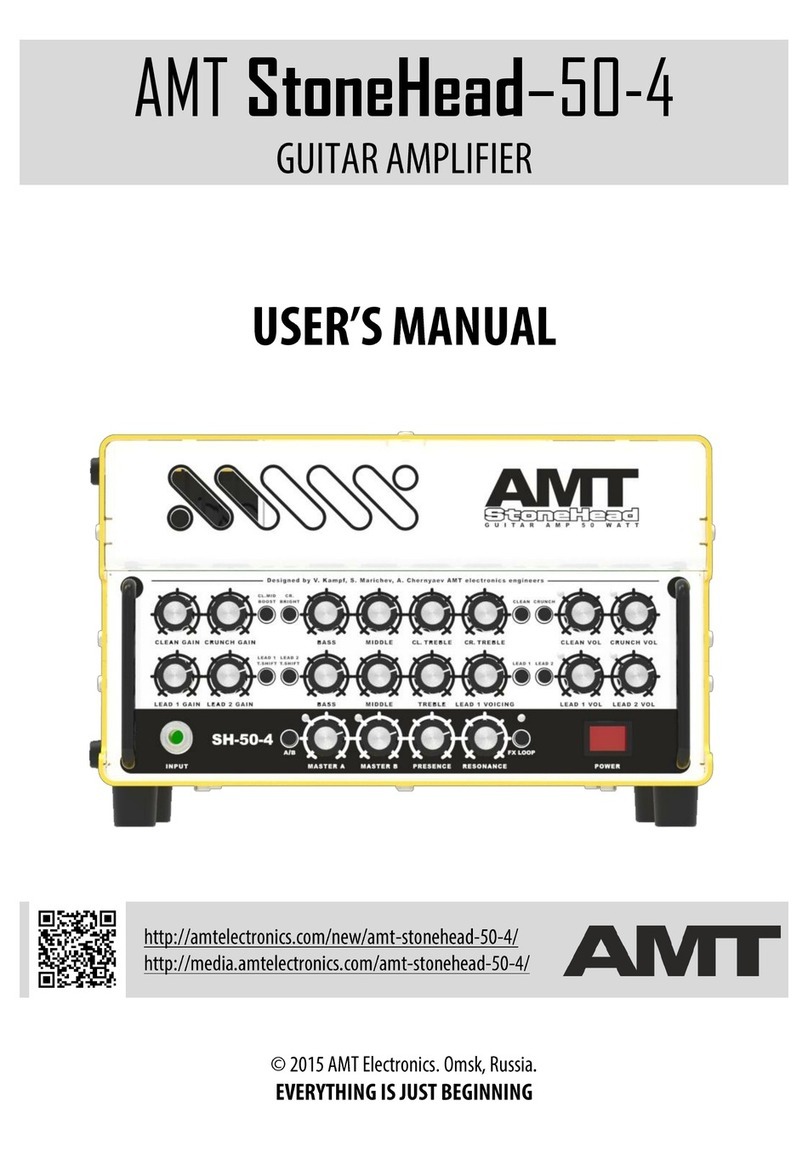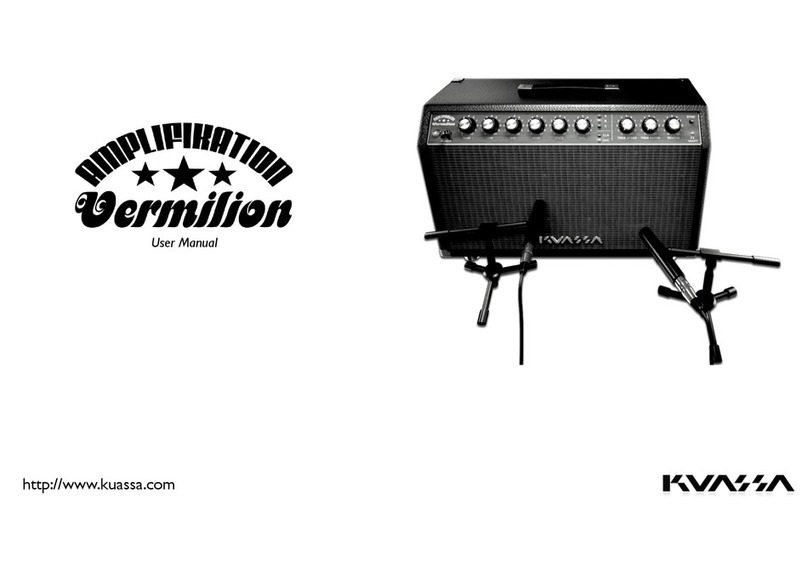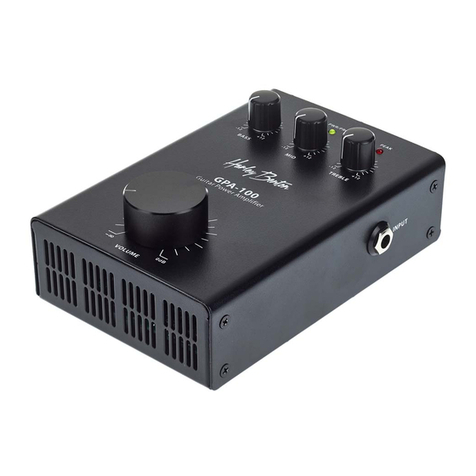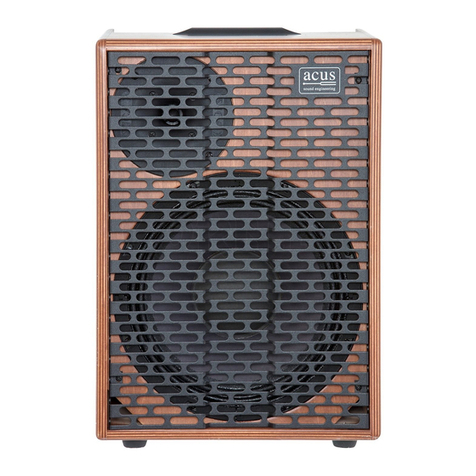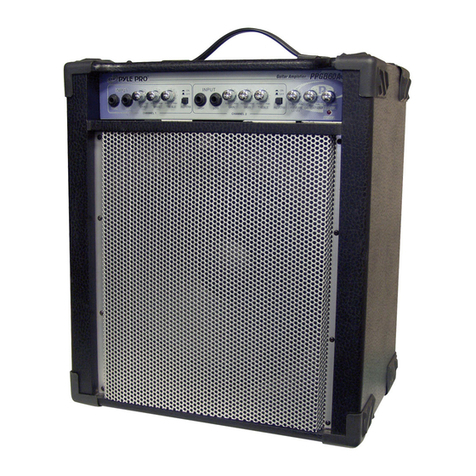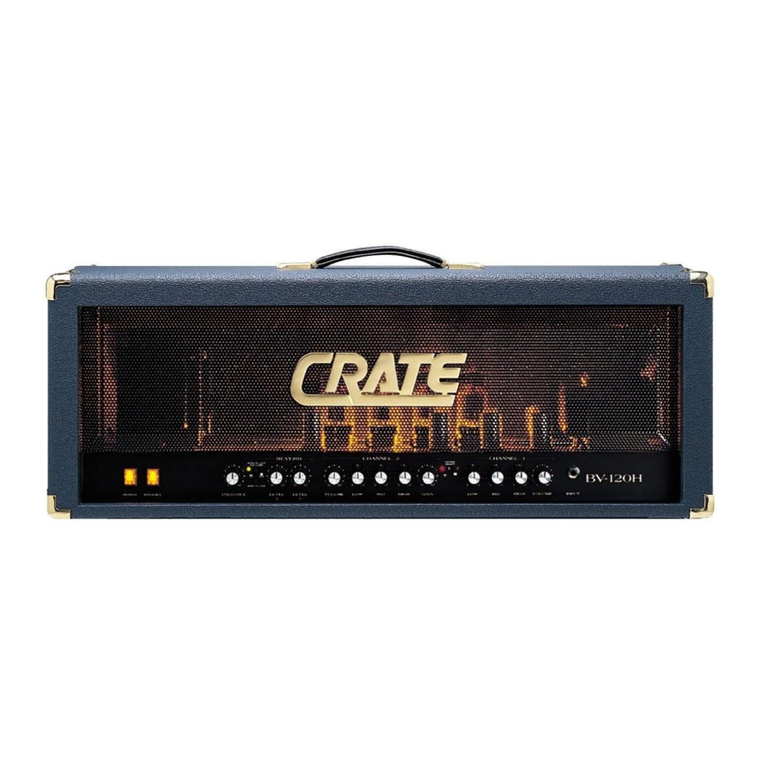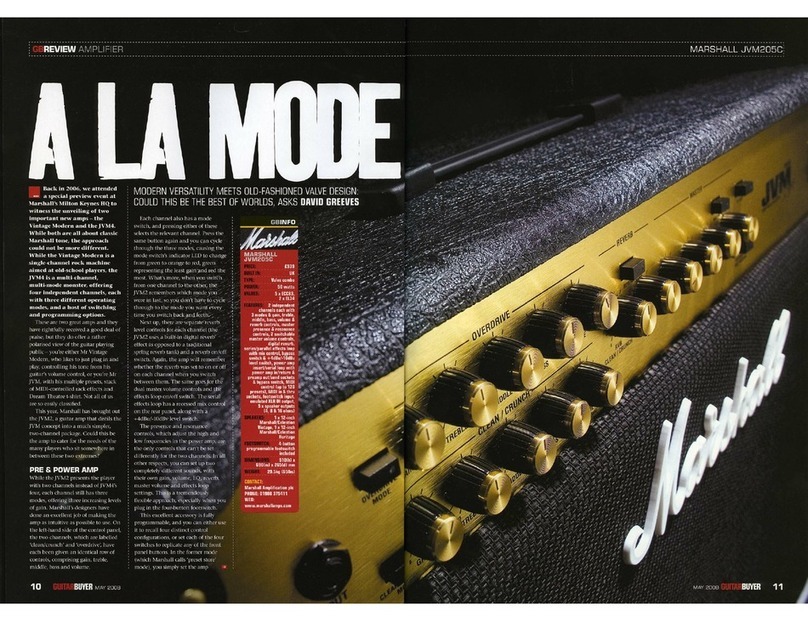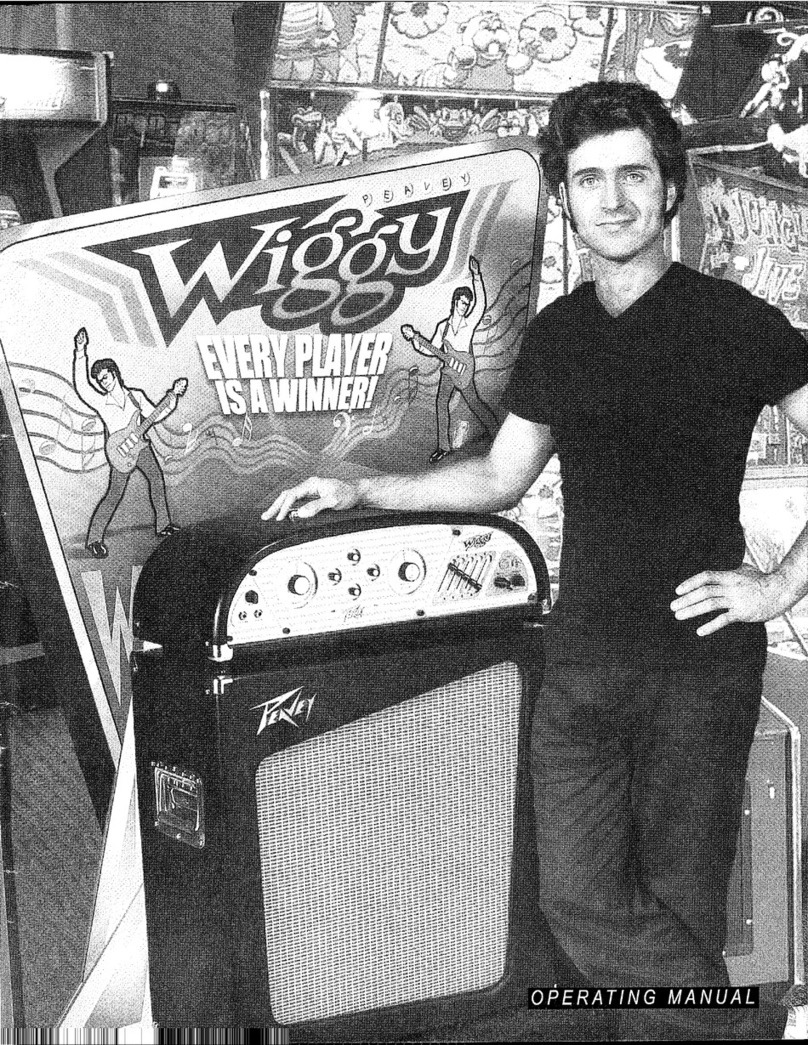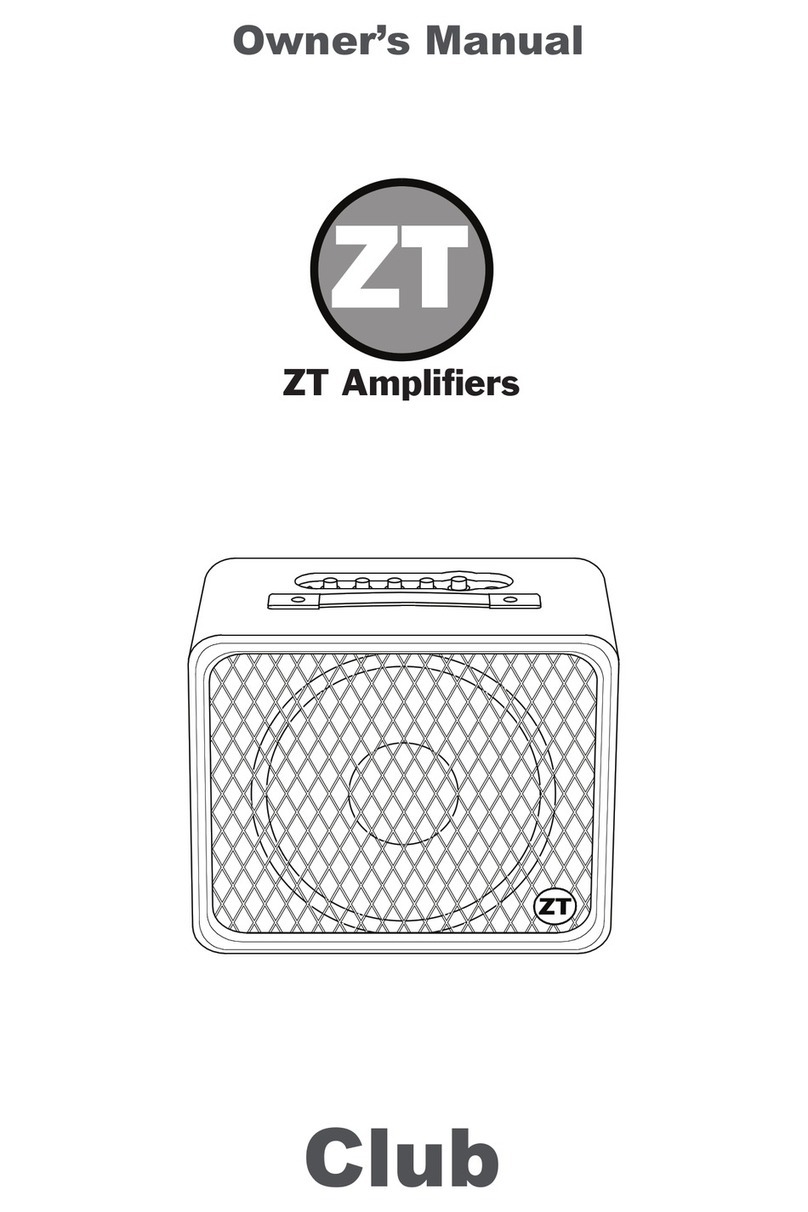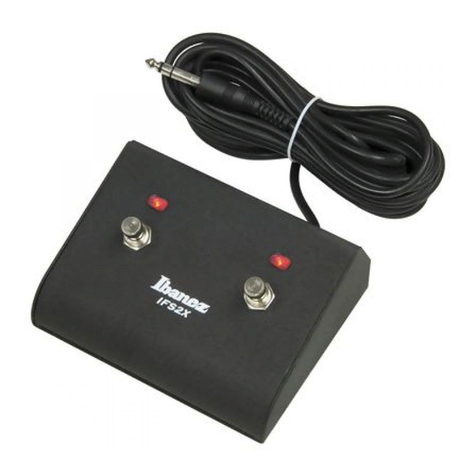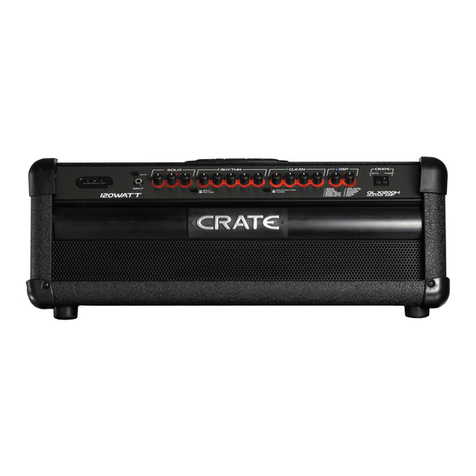
ASHDOWN ENGINEERING - CTM-100 CTM-100
LE VU METER
Le VU-mètre installé sur le CTM est un compteur à double fonction détaillé comme
suit:
En utilisant le sélecteur à bouton-poussoir marqué «AUDIO / BIAS», les fonctions sont
accessibles de la manière suivante:
1 / “AUDIO” - En mode audio, le compteur est réglé pour lire la sortie audio de
chacun des six tubes de puissance et chacun peut être mesuré en utilisant le sélecteur
rotatif sur le panneau avant. Pendant la lecture, c’est le mode de fonctionnement
normal du compteur et la lecture obtenue sera une indication directe de la puissance
produite par chaque tube de sortie, le compteur est calibré de sorte que lorsque
l’aiguille atteint le début de la section rouge, le tube de puissance en cours de mesure
produira un volume propre maximal.
Le commutateur peut être tourné pour sélectionner l’une des lampes de puissance
et sa sortie relative sera indiquée sur le compteur, notez que lors de l’exécution de ce
test, vous devrez jouer à volume égal pour chaque test.
2 / “BIAS” - Dans ce mode, le compteur deviendra ROUGE.
Pour vérier la polarisation des tubes de sortie, procédez comme suit:
Faites fonctionner l’amplicateur pendant au moins 10 minutes pour permettre aux
tubes de sortie de chauffer complètement avec l’amplicateur réglé pour couper le
son. Veille activée. Sélectionnez .. Tube 1 et avec un tournevis bijoutier isolé, ajustez
doucement la tondeuse située sur le panneau arrière. La lecture à viser est l’aiguille
juste au début du rouge, c’est-à-dire 0db.
Notez que bien que chaque tube puisse être ajusté individuellement, il est possible
d’obtenir des tubes qui ne peuvent pas être ajustés à la lecture correcte, ceux-ci
peuvent toujours être utilisés à condition que la lecture ne soit pas dans le rouge,
une lecture inférieure est acceptable et notera l’impact de manière audible sur le
puissance de sortie ou qualité sonore de l’amplicateur.
Veuillez également noter que les trimmers sont de 25 types de tours pour faciliter le
réglage.Ce type de réglage n’a pas de butée de n de course, donc si vous atteignez
un point où le régleur ne donnera plus de réglage, le tube de sortie devra être
remplacé si la lecture est trop élevé c’est-à-dire dans le ROUGE.
Répétez cette opération pour chacun des quatre tubes de sortie à tour de rôle.
REVENEZ LE COMPTEUR EN MODE «audio» APRÈS LE BIASING. NE PAS FAIRE
FONCTIONNER L’AMPLIFICATEUR EN MODE BIAS PENDANT LA JOUER.
Notez qu’un fusible de protection est installé sur chacun des tubes de sortie et si
aucune lecture n’est obtenue sur le compteur, ce fusible aura échoué. Les fusibles de
protection sont situés à côté de la sortie qu’ils protègent le calibre correct est 315Ma
à fusion rapide, en cas de fusible grillé, ils DOIVENT être remplacés par des fusibles
de calibre et de type corrects.
Un fusible qui saute continuellement indiquerait soit un tube de sortie mal polarisé,
soit un tube de sortie défectueux.
FONCTIONNERA
TOUJOURS
À RÉDUIT
POUVOIR
CADRE IDÉAL EXCLURE!
NE DÉFINISSEZ
AUCUN
TUBE AUSSI
HAUT
MODE D’EMPLOIMODE D’EMPLOI



